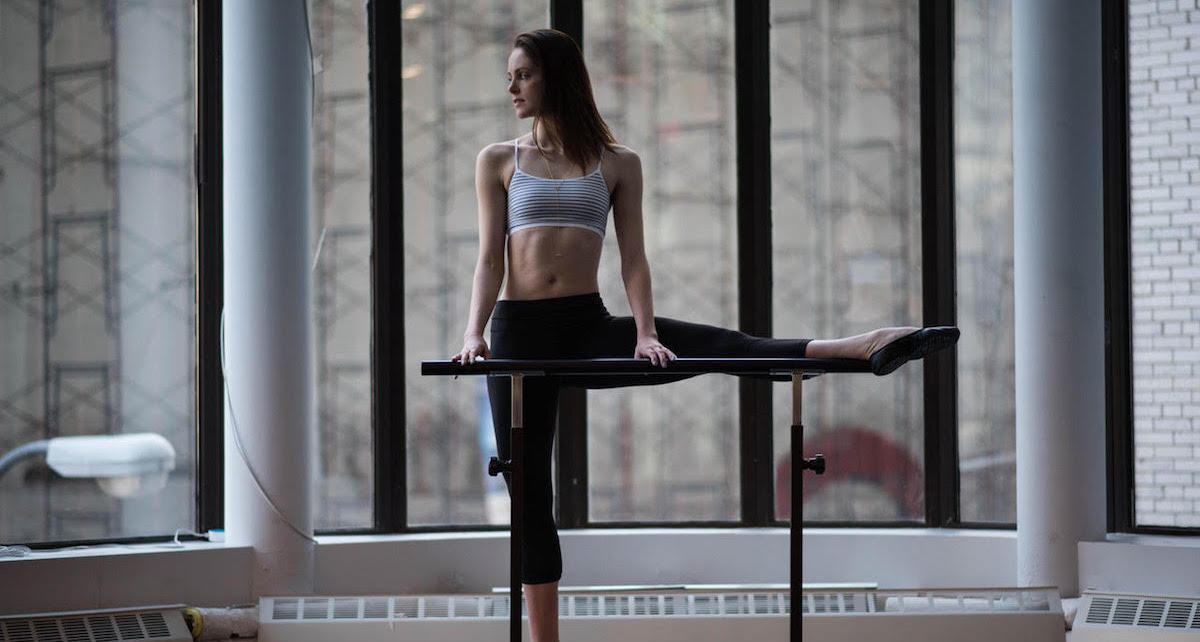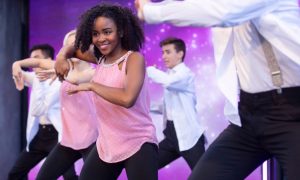Barre classes are so “in” right now. Workout tanks inked with “BARRE SO HARD” and water bottles reading “MEET ME AT THE BARRE” seem to be everywhere. And while barre classes have taken the world by storm, classically trained dancers might scoff at these dance-inspired workouts that claim to sculpt the long and lean muscles of a ballerina — a physique that takes years of training, technique and dedication to achieve. But the truth is, barre is more than just a trendy class to take on Saturday mornings before brunch with your girlfriends. In fact, the technique is an ideal cross-training complement for dancers.
In the late 1950s, a German dancer named Lotte Berk developed the barre technique in her own basement studio. After injuring her back in a car accident, Berk essentially healed herself through a routine that combined ballet conditioning with rehabilitative therapy. The Lotte Berk Method opened in New York City in 1971 and, although it closed its doors in 2005, inspired a number of niche barre methods and studios across the country.
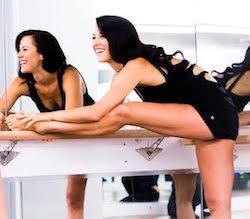
Sara Hoenes. Photo courtesy of Hoenes.
Dance Informa interviewed instructors from some of New York City’s most prestigious barre studios, including Physique 57, Pure Barre, FlyBarre, and Equinox. What’s more, these instructors are professional dancers who have performed as Radio City Rockettes, on Broadway, and in national and international tours. Read on to learn how barre classes can enhance your dancing by improving stamina, strength, flexibility and your mind-body connection.
How would you describe “barre class” to your friends and family?
Abigail Gatlin, Pure Barre
“Barre is a full-body workout that focuses on body weight and resistance within a small range of motion to fatigue your major muscle groups and stabilizing muscles to the point of exhaustion. Driven by music with a major focus on correct form, it’s an awesome opportunity to work on your strength and flexibility.”
What are the benefits of barre class?
Kimberly Dawn Neumann, Equinox Barre Burn/True Barre
“Barre is generally non-impact, which is really good when it comes to protecting one’s joints. Also, working the muscles in this small and controlled manner provides enough resistance training that you glean all the benefits of weight-bearing exercise without any risk of bulking up. The results are long and lean muscles with tone and strength.”
How is barre unique from other group fitness classes?
Gatlin
“There’s a very low risk of injury compared to traditional strength training. And you’ll use all muscle groups. Even when the focus for a particular set is on the thighs, for example, because you’re holding on to the barre, your abs are still engaged. You’re constantly working on core stabilization, even when the exercise is primarily working something else. The very small isometric movements (‘up an inch, down an inch’) with light hand weights, resistance bands or just your own body weight build remarkable strength. You’ll often find your muscles shaking like Jell-O! Working within this small range of motion gives you the opportunity to focus on finding your best form and getting the most efficient workout possible. Plus, there’s plenty of variety in the exercises, and class is driven by music, so you won’t get bored.”
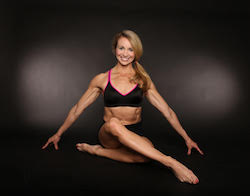
Kimberly Dawn Neumann. Photo courtesy of Neumann.
How is barre inspired by dance?
Lainee Hunter, Physique 57
“Barre is inspired by dance in two ways — the first being our use of a ballet barre for support and resistance, and the second in being how we want to shape our clients’ bodies. Dancers are lean, strong and flexible, which is the inspiration behind barre movement and results. We have similar foot positions to ballet like a plié wide second and use lifted heels (relevé) to strengthen the calf muscles and ankles.”
Why should dancers take barre as cross-training?
Hunter
“In barre classes, we keep you in positions and isolate muscle groups for longer than you would in dance class. This forces you to really focus on strengthening the muscles through proper form. Lifting weights is important for bone, joint and muscle health, which can make your dance movement stronger and much more safe. We also have a huge focus on core stabilization, which is so vital for all styles of dance, whether you’re finding your center in a series of pirouette turns or isolating tiny pop and lock movements in a hip hop combo.”
But you do such small moves with light weights. What can that do?
Sara Hoenes, FlyBarre
“We do a long series of small moves with light hand weights — that is where the muscle endurance comes in. If you’ve never taken a barre class before, brace yourself to experience some serious muscle fatigue. The shake you feel in your legs from tiny pulses and in your arms from just lifting two-pound weights is unlike the ‘burn’ you’ve felt in any class you’ve taken before. Sometimes barre classes also introduce cardio pushes through plyometric exercises. This is actually my favorite class for cross-training because it really challenges my strength and endurance.”
What should I wear to class?
Hoenes
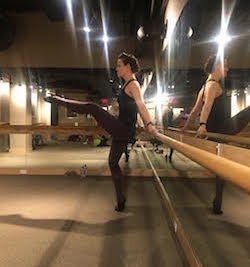
Abigail Gatlin. Photo courtesy of Gatlin.
“I would recommend wearing leggings and a comfortable top. Since proper alignment is so important, form-fitting clothes are ideal so you and your instructor can check your position and posture in the mirror. You’ll also want a supportive sports bra if you take a class that involves jumping (plyometrics). Each studio is different when it comes to footwear. Some suggest socks with grippers on the bottom, while others give you the option of socks or bare feet.”
Is barre safe if I’m recovering from an injury?
Neumann
“Barre classes are generally safe predicated on the exerciser being in good form. If recovering from an injury, modifications may need to be made. Discuss the injury before class with the instructor if you’re unsure of how to safely work with your injury in this modality. Also, keep in mind that with any injury, if there is ever sharp pain, you should stop. But from a rehabilitative standpoint, barre is a great way for dancers to get back in peak form when working their way toward health after an injury.”
To learn more about these barre studios, sign up for classes and even stream workouts online, visit the following websites:
Equinox: www.equinox.com
*If you are not a member of Equinox, you can stream Kimberly Dawn Neumann’s signature class online at kimberlydawn.yondo.com.
FlyBarre: www.flywheelsports.com/why-flybarre
Physique 57: www.physique57.com
Pure Barre: www.purebarre.com
By Mary Callahan of Dance Informa.


